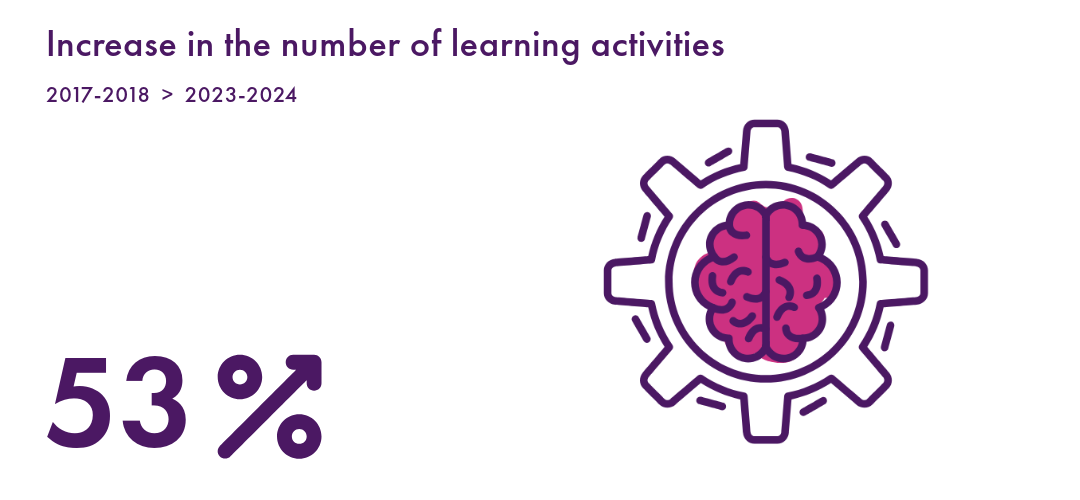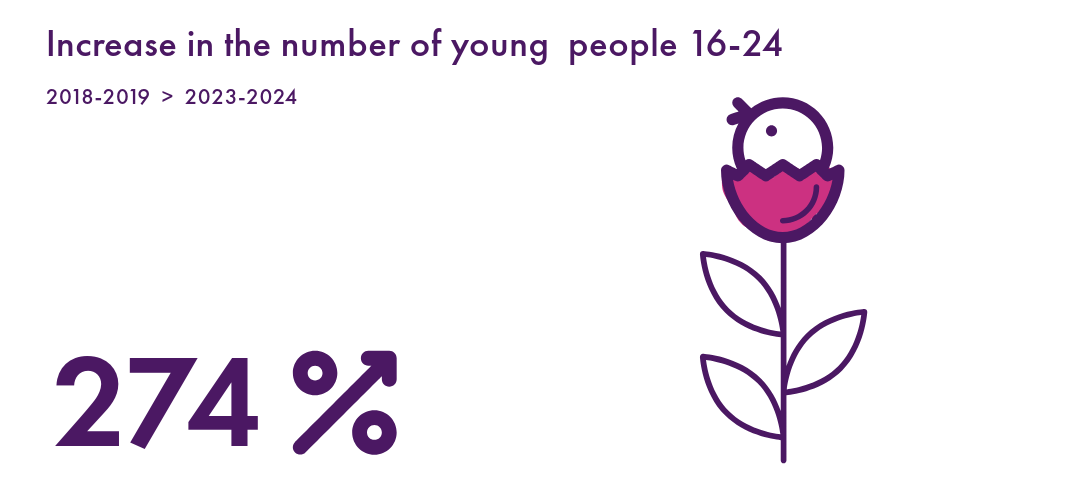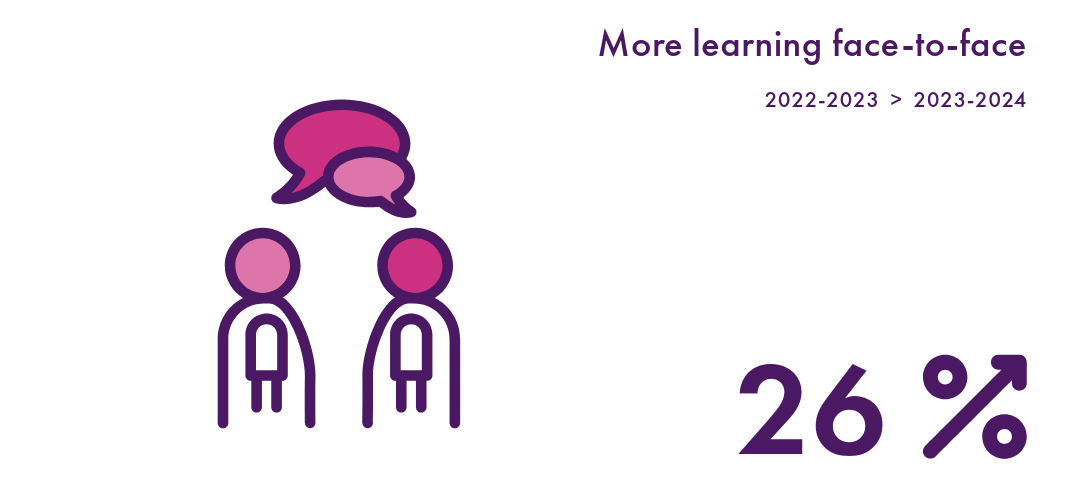The ‘number of unique learners’ counts every learner only once, regardless of the number of courses they have attended during the year.
- 2023-2024 data includes the highest number of learners since the Centre first published data.
- In 2023-2024 there were 18,330 unique learners, an increase of 8% in comparison to 2022-2023.
- 2023-2024 data reports an increase of 45% in unique learners in comparison to the first publication of data in 2017-2018.





